Ever had someone tell you you’re a fast worker? They might have asked you to edit a few images, create a short video about something, or find a bug fix in the code they’d written. A task that’d take you a few hours, they thought. But you simply whipped up Canva, Loom, VS Code, and did what they'd asked in mere minutes.
The right remote work tools can supercharge your productivity. They enable you to move fast without compromising on quality. The better these tools get, the more we can accomplish during our working hours. That’s why we compiled a list of our 21 favorite remote work tools for software developers.
You’ll probably know a few of these tools. But even if you’re a productivity nut scouring the Internet for productivity software every evening, we’re sure there’ll be a few tools that you hadn’t heard of. To make the list more digestible, we subdivided it into categories:
Communication
Slack

If you work for a fully remote company, Slack is your new office. It’s a business communication platform with direct messaging and chat rooms that you can organize by topic. You can access Slack in the browser, but there’s also a desktop client and mobile apps.
Slack allows you to be creative with how you communicate across the company. For example, every X-Teamer has a Slack journal where they jot down what they’re working on. We also have separate channels for the many games we organize and channels for music, movies, pets, parents, and, of course, the many different programming languages X-Teamers specialize in.
Loom
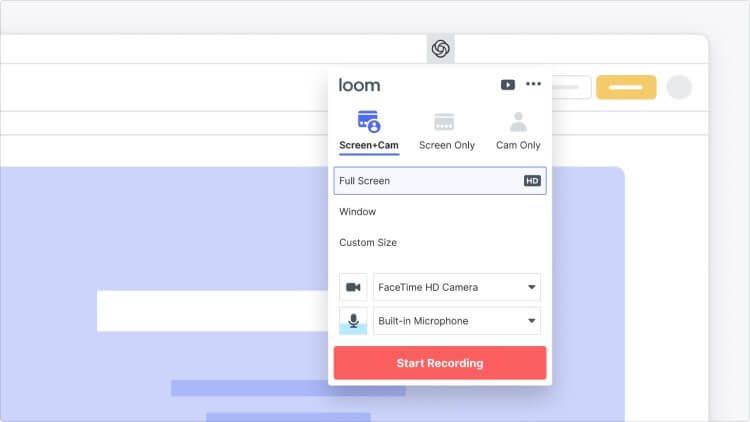
Loom is a video recording tool that lets you simultaneously record your desktop, camera, and microphone. It’s perfect for creating instructional videos to walk someone through a particular procedure (that’s how we use it).
Loom’s basic plan is free and allows you to record videos as well as comment on your own or other people’s videos. Other plans give you drawing tools, custom branding, and more advanced security. To use the web app, you need to install a Chrome extension, but there’s a desktop app you can download too.
Zoom

Zoom became incredibly popular when COVID-19 forced everyone into quarantine. There was even a running joke that babies born 9 months after the quarantine should be called “Zoomers”. Jokes aside, Zoom is an excellent videoconferencing app used by individuals and companies alike to have their remote meetings.
Zoom is free with unlimited 1-1 meetings, although there’s a 40-minute limit on group meetings. Similar to Loom and Slack, you can access Zoom via the browsers but there are also desktop and mobile apps if that’s what you prefer. If you prefer not to use Zoom, alternatives are Google Meet and Microsoft Teams.
Tasks
Todoist

Get the tasks out of your head into a to-do app. This is one of the fundamental rules of Getting Things Done. Todoist is a wonderful app to quickly enter new tasks, organize them appropriately, and start ticking them off one by one.
Todoist lets you create tasks with recurring due dates, tag them however you want, prioritize them, and create subtasks for each task. You can also delegate tasks by inviting your colleagues to your Todoist environment. It’s light, it’s flexible, and all in all a great to-do app.
Trello

While Todoist works best for tasks, Trello works best for projects that you work on collaboratively. Each board has lists, each list has cards, and each card can contain a ton of information: due dates, checklists, links, images, etc.
It’s flexible and it works particularly well for scheduling in blog content or for developer teams who work in sprints. Access Trello in your browser or download its respective desktop client or mobile apps.
Notes
Evernote
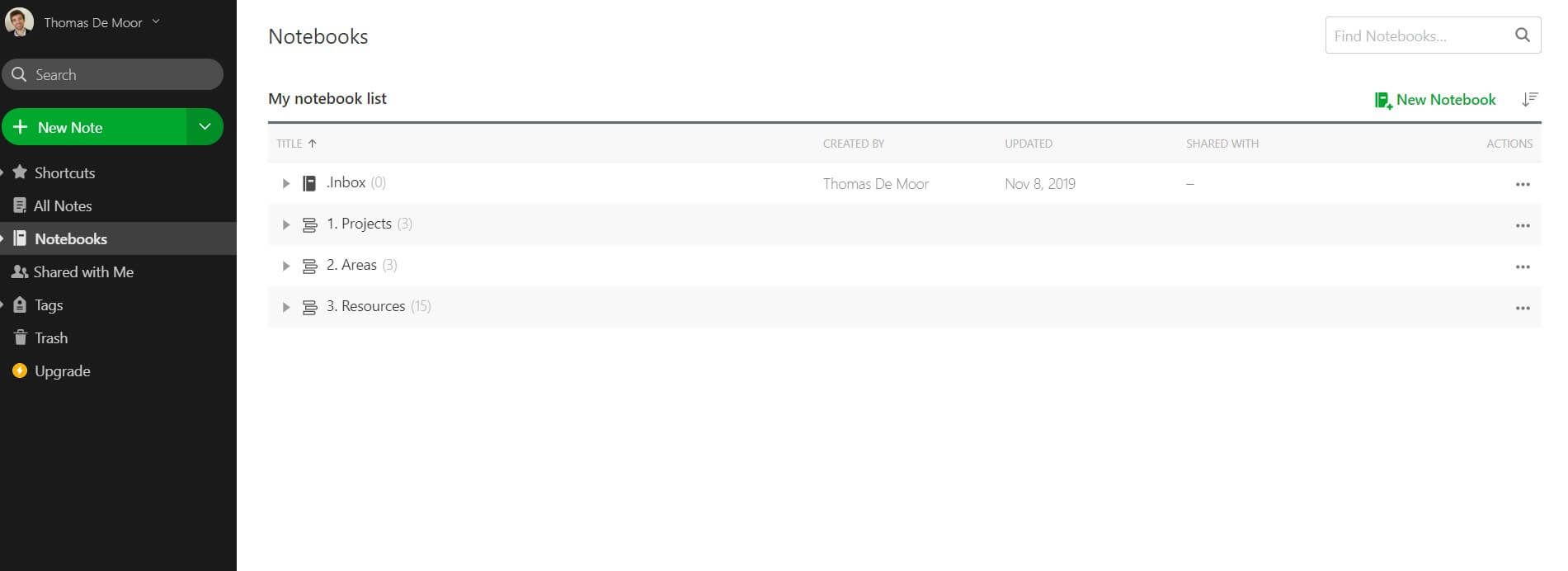
The grandfather of productivity software. Founded in the year 2,000 as marketing software, Evernote is now by far the best-known note-taking app. It comes with standout features, such as the ability to clip anything from the Internet into a note, the ability to search text in handwritten photos and images, and the ability to identify handwritten languages.
While some would argue that Evernote hasn’t really gotten much better in recent years, it’s still the number one app when it comes to taking notes on any device and organizing those notes intuitively and easily.
Notion
We’ve placed Notion under Notes, but it might as well have been placed under Tasks. Notion is a big app. It can serve as your team’s wiki, a central repository for all your projects, and a place where you store your documents and tasks.
Entire companies are built on Notion. Blinkist uses Notion, Figma uses Notion, Duolingo uses Notion. The best part? It’s free for personal use. There’s a lot to explore, and it can be a bit overwhelming at times, but Notion is powerful enough software to become your productivity hub.
Roam Research
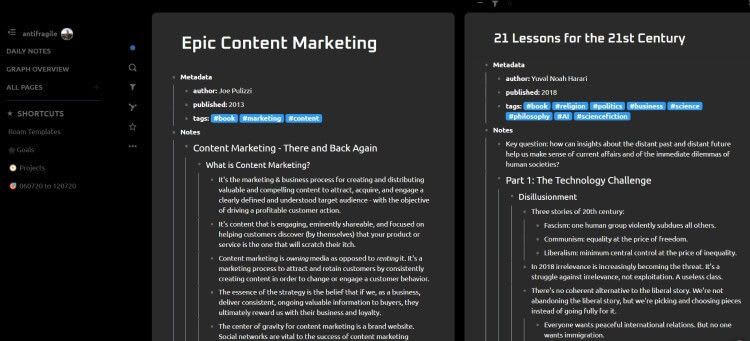
The new kid on the block that breaks all the rules and doesn’t care. Roam is a note-taking tool for networked thought. Roam makes it incredibly easy to link information from one note to the other. It’s a wiki-like experience, except that the links you make are bi-directional. They work both ways.
At the moment, Roam is functionality first, UI later. It doesn’t look as pretty as any of the other apps listed above, but it’s so frictionless and comes with so many new, interesting ideas on how to structure notes (i.e. knowledge) that it’s absolutely worth checking out. There’s a free 14-day trial.
Programming
GitHub
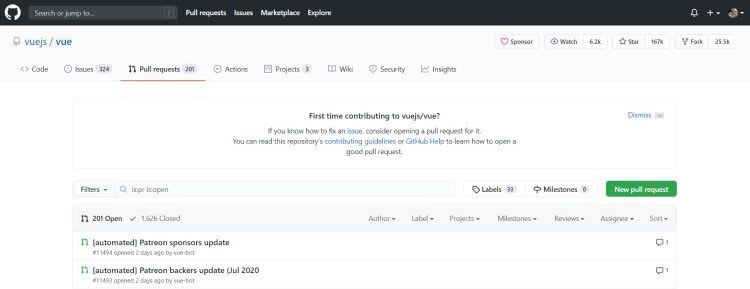
Who here isn’t familiar with GitHub? It’s the world’s go-to software development platform and pretty much a required remote work tool for any software developer. GitHub helps development teams work together on their software projects from beginning to end.
GitHub makes it easy to review code, propose changes, automate your workflow, and more. It also integrates with plenty of other remote work tools, like Slack, Azure Pipelines, Jira, and others.
Visual Studio Code
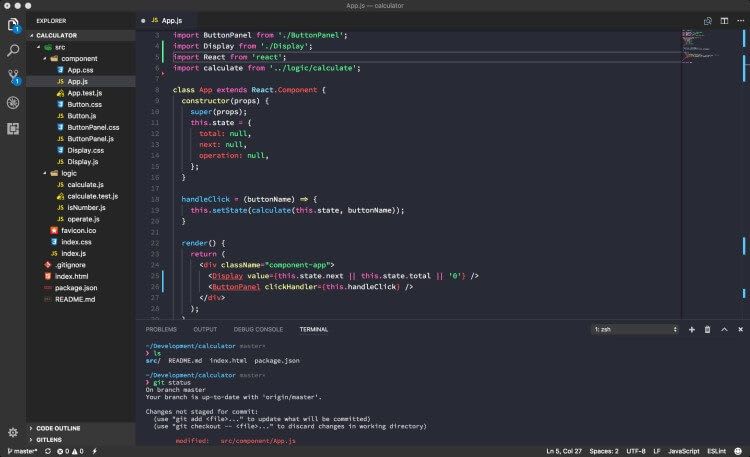
Visual Studio Code is the favorite code editor of most developers. It’s free, it works for Windows, Mac, and Linux, it has Git commands built-in, and it has so many extensions that you can customize it to your heart’s desire.
VS Code should not be confused with Microsoft’s Visual Studio IDE, which is a fully featured IDE that enables more complex workflows not available in VS Code. Visual Studio is also free for students, open-source contributors, and individuals.
Jira
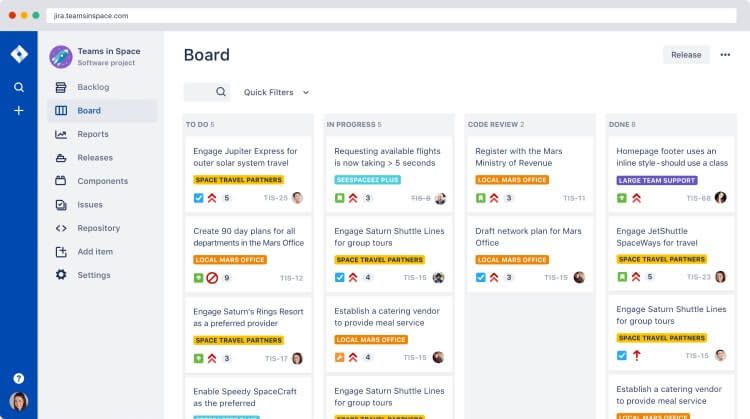
Jira is an issue-tracking tool that most remote developers will be familiar with. Developed by Atlassian, this remote work tool is perfect for tracking bugs in your codebase and for agile project management.
You can either use one of Jira's out-of-the-box workflows to hit the ground running or you can create a new workflow that matches the way your team works. Jira connects to your product’s roadmap and allows you to ship faster, before those deadlines hit.
Designing
Photoshop / GIMP

Adobe’s best-known product. Originally created in 1988 (!), Photoshop is the standard when it comes to designing and creating images and raster graphics. Photoshop has a fairly steep learning curve, but there are plenty of free tutorials on YouTube to get you started.
To use Photoshop, you’ll either need to subscribe to Adobe’s Creative Cloud (about $10 a month) or pay hundreds of dollars for a boxed copy of the software. Alternatively, GIMP is Photoshop’s free, open-source alternative. While its UI is not as pretty as Photoshop’s, it’s also quite powerful and should be more than enough for almost all image editing tasks.
Markup Hero
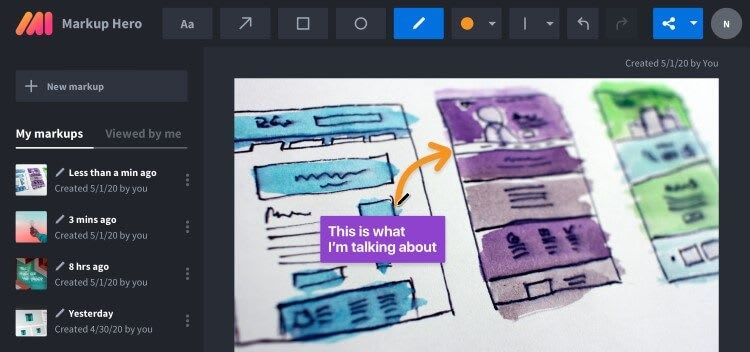
Markup Hero is a screenshot and annotation tool that makes it easy to communicate a message on a picture or image. If you’re someone who often receives and sends images, PDFs, and screenshots to other people, Markup Hero is an easy way to add annotations and get on the same page with your team.
You can try Markup Hero for free without having to sign up. Just click “new” in the top left of their website, upload an image, and explore its functionality. It’s easy, it’s fast, and it’s a good remote work tool to know about when you’re working with images.
Canva

Canva is a graphic design platform that lets you create images in an intuitive and easy way. Perfect if you want to create social media graphics, blog post images, presentations, posters, or other types of visual content.
Canva has hundreds of free templates and graphics to create the image you have in your mind. They also help you with the dimensions of each image, although you can set custom dimensions too. Canva is free to use for individuals and for small teams.
Security
NordVPN
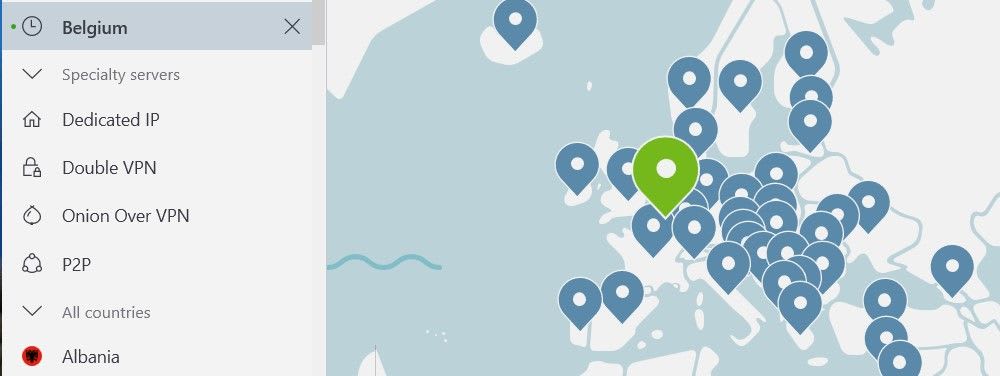
Remote work is flexible. You can work from anywhere! However, this means that you need to secure your smartphone and laptop from intruders. So you need a VPN. NordVPN is one of the best-trusted VPN available today.
It’s not free, but there’s a good reason for that. Free VPNs tend to either sell your data or have weaker defenses that will still leave you vulnerable. It’s worth spending some money on a good VPN to adequately protect yourself from the strange guy who’s been sitting at your favorite Starbucks for five hours, snooping on everyone who's insecurely connected to the network.
LastPass
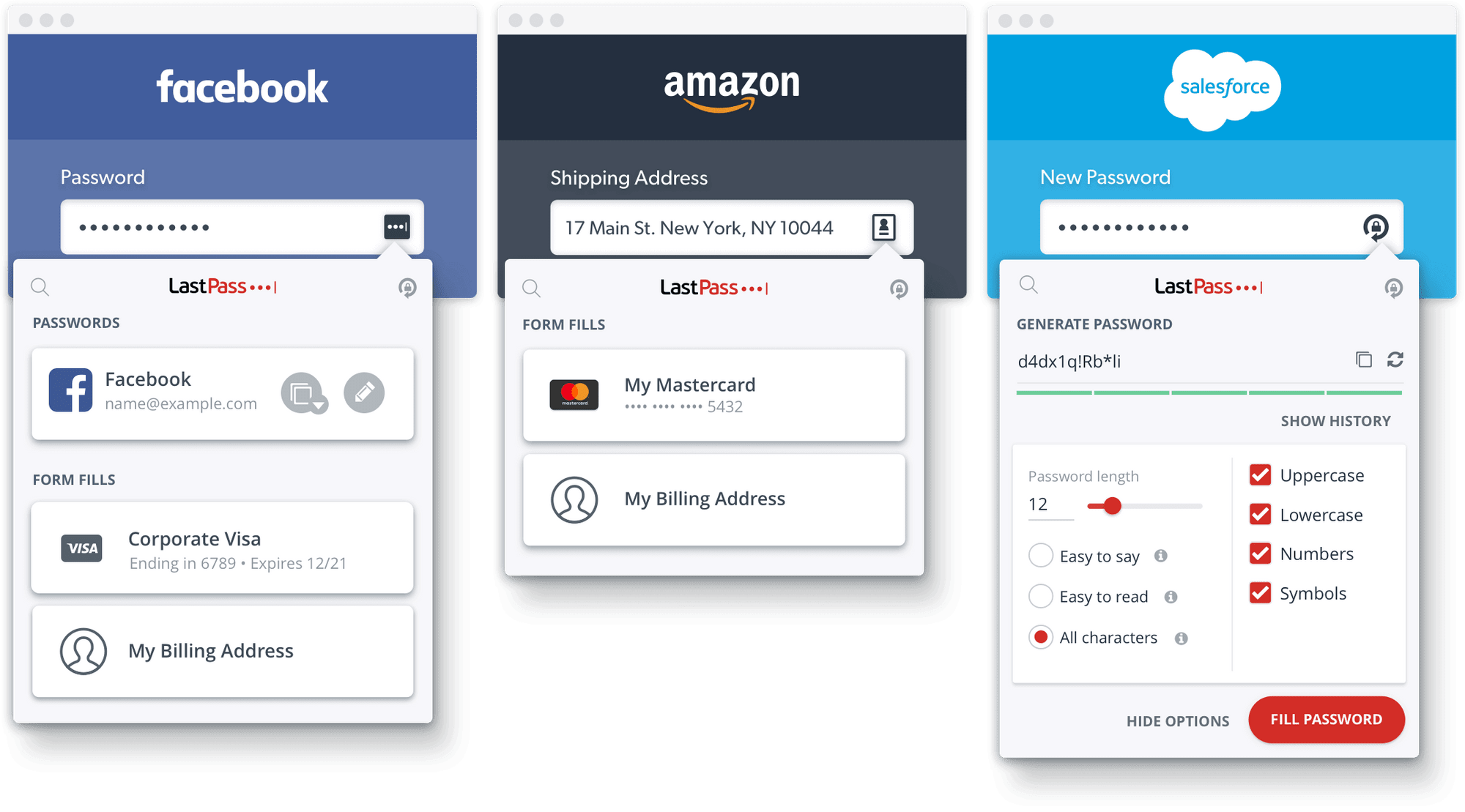
The second remote work tool you’ll need for security is a password manager. Nowadays, everyone has so many accounts in so many places that most people have a single password they use everywhere. At best, a few variations of a single password. With LastPass, you can ditch that terrible practice and create complex passwords for every account without having to remember them.
LastPass stores all your passwords across all your devices. It helps you generate strong passwords, makes logging in so much easier, and can store important information in the form of notes too (e.g. seed phrases or backup codes).
Finance
FreshBooks
No one enjoys paying through the nose for an accountant. This is particularly true if you’re a freelancer or a small business with a limited number of invoices. Thankfully, a remote work tool like FreshBooks makes running the administration of your business fairly easy and stress-free.
FreshBooks lets you send invoices and automated follow-up emails. It also collects payments in several ways and generates reports that give you a quick overview of the finances of your business. FreshBooks is comprehensive software for doing the admin of your business.
TransferWise

TransferWise is a godsend for remote developers, particularly for those who work as freelancers. It provides you with bank accounts in major currencies and it lets you convert money cheaply and quickly.
The world is increasingly without borders, but the world’s traditional financial system isn’t quite up to speed with that yet. TransferWise is. If you’re sending out invoices to clients in different countries with different currencies, TransferWise is a must-have.
Time tracking
RescueTime
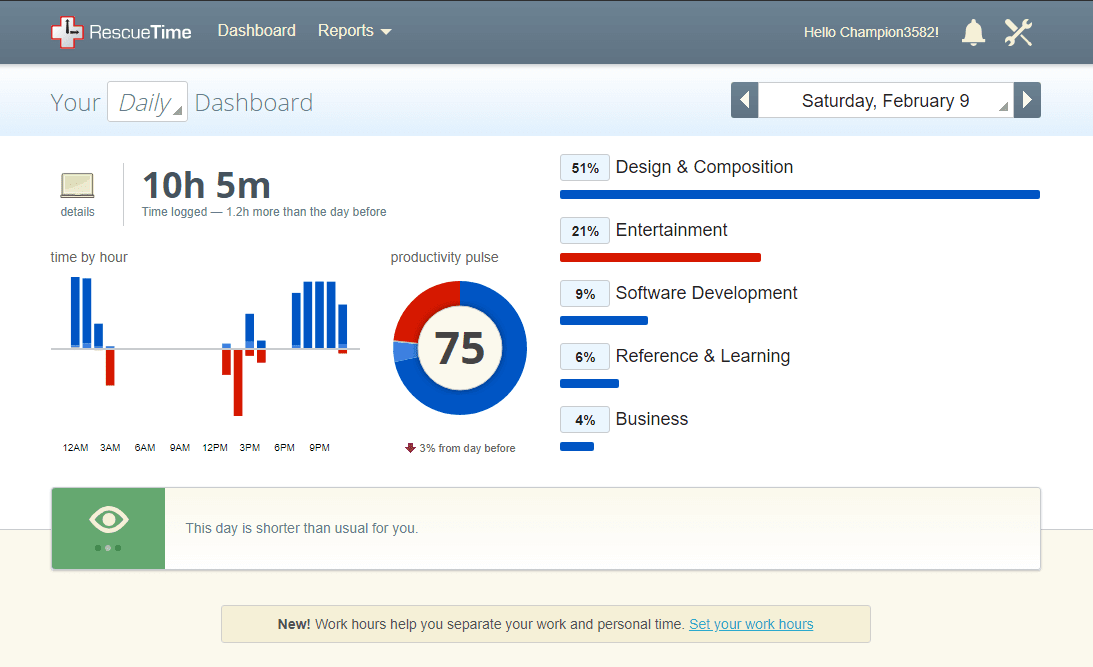
Time is our most valuable currency. As a remote developer, it makes sense to understand where you spend your time on a daily basis. RescueTime is automatic time-tracking software that helps you with exactly that.
It automatically tracks the time you spend on apps, websites, and even documents without you having to manually enter anything. It also blocks some of the more distracting websites and provides you with detailed reports on all of it. If you don’t like RescueTime, Toggl is a great alternative.
Misc
Google Drive
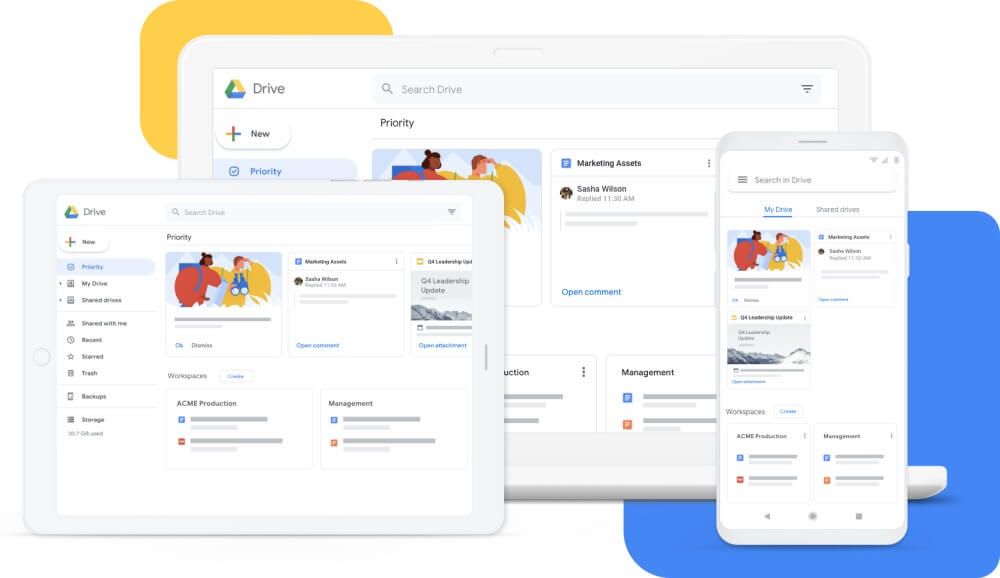
Where should you store all your stuff? All your docs, your screenshots, your images, your presentations, your files, etc. Google Drive is the answer and that shouldn’t come as a surprise to you.
Its prices range from free to very cheap, its UI is intuitive, and it’s part of the Google Suite that also has the excellent Google Docs and Google Sheets. If you want storage with a bit more functionality, it’s also worth checking out Dropbox or Box.
Zapier
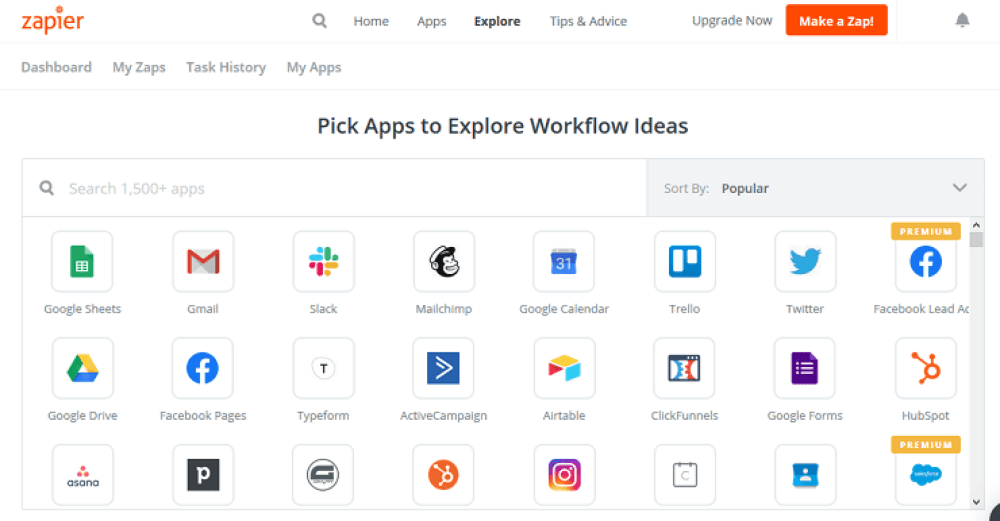
The number one remote work tool to automate the boring stuff. Zapier’s slogan is “easy automation for busy people” and it certainly lives up to that. Zapier is flexible software that allows you to create connections between two different pieces of software.
Want to create a new entry in a Google Sheet every time a FreshBooks invoice gets paid? Zapier helps you do that. Want to automatically add all Gmail attachments to Dropbox? Zapier helps you do that. The possibilities are endless!
What about you? Do you have any other remote working tools that we haven't mentioned here? Let us know on Twitter.
Favorite remote work tools as a developer?
— X-Team (@xteam) July 8, 2020
